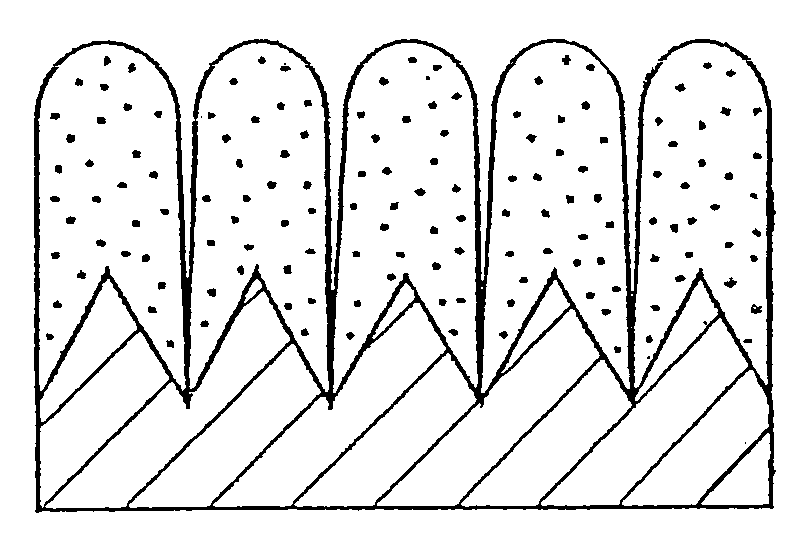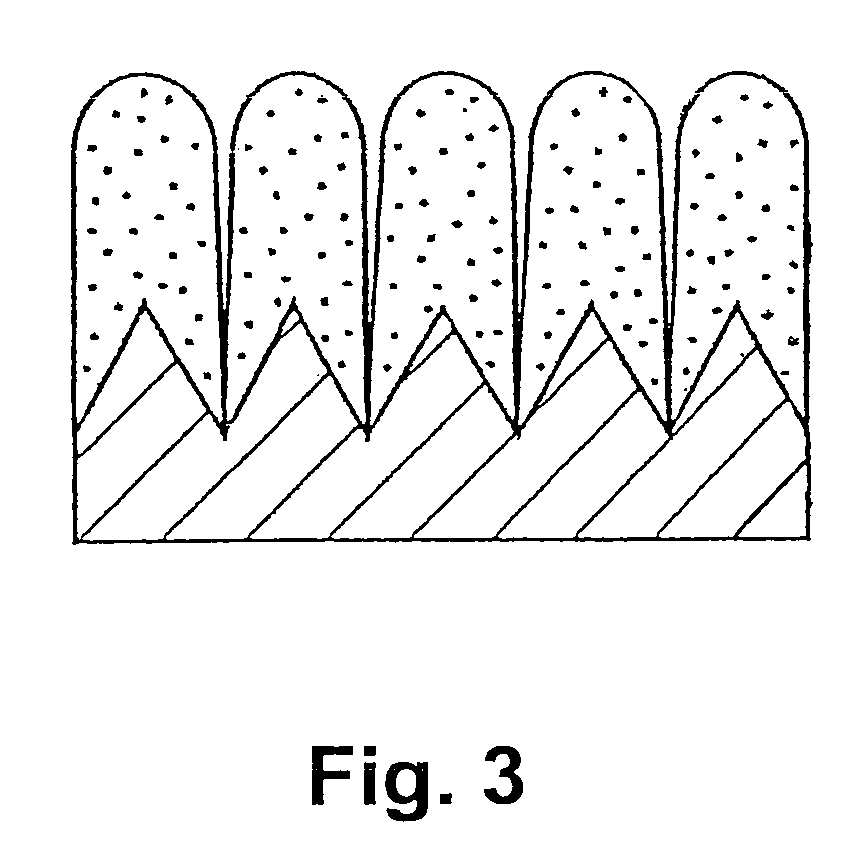Electrode for lithium secondary battery and lithium secondary battery
a lithium secondary battery and lithium secondary battery technology, applied in the direction of negative electrodes, electrode manufacturing processes, cell components, etc., can solve the problems of low discharge cycle characteristics, large volume expansion and shrinkage during charge-discharge reaction, and silicon not being put into practical use, etc., to achieve satisfactory maintenance and improve discharge cycle characteristics
- Summary
- Abstract
- Description
- Claims
- Application Information
AI Technical Summary
Benefits of technology
Problems solved by technology
Method used
Image
Examples
experiment 1
[0060](Experiment 1)
[0061][Manufacturing of Negative Electrode]
[0062]Electrolytic copper foil (thickness: 18 μm, surface roughness: Ra=0.188 μm) was used as a current collector, and a thin film was formed on the electrolytic copper foil by an RF sputtering method. As the thin film, a silicon-cobalt thin film, a silicon-chromium thin film and a silicon thin film were formed. As the silicon-cobalt thin film, five kinds of thin films in which their cobalt content are different from one another were formed.
[0063]The sputtering conditions were such that sputter gas (Ar) flow rate: 10 sccm, a substrate temperature: room temperature (without heating), reactive pressure: 0.665 Pa (5×10−3 Torr) and a high frequency power: 500 W. A single crystalline silicon target (diameter: 4 in (100 mm)) was used as a target, and as for fabricating samples which contain cobalt as a different element, cobalt (Co) chips were arranged on the silicon (Si) target, and as for fabricating samples which contain ch...
experiment 2
[0083](Experiment 2)
[0084]Similarly to the experiment 1, thin films were formed on the electrolytic copper foil by an RF sputtering method. As the thin film, a silicon-zinc thin film, a silicon-iron thin film, a silicon-nickel thin film, a silicon-zirconium thin film, a silicon-silver thin film, a silicon-manganese thin film, a silicon-molybdenum thin film, a silicon-tantalum thin film, a silicon-niobium thin film, a silicon-titanium thin film, a silicon-tungsten thin film and a silicon-vanadium thin film were formed.
[0085]As for a target, similarly to the experiment 1, the chips made of the above different elements were arranged on the single crystalline silicon target. The sizes and numbers of the chips are shown in Table 3.
[0086]The obtained thin films were subjected to the Raman spectroscopy analysis, so that it was confirmed that they were thin films comprising amorphous silicon as a main component.
[0087]Similarly to the experiment 1, the lithium secondary batteries were manufa...
experiment 3
[0093](Experiment 3)
[0094]The electrolytic copper foil (thickness: 18 μm, surface roughness: Ra=0.188 μm) was used as the current collector, and thin films were formed on the electrolytic copper foil by the sputtering method using DC pulse discharge. As the thin films, a silicon-cobalt thin film, a silicon-zinc thin film, a silicon-iron thin film and a silicon-zirconium thin film were formed.
[0095]The sputtering conditions were such that a sputter gas (AR) flow rate: 85 sccm, a substrate temperature: room temperature (without heating), reactive pressure: 0.532 Pa (4×10−3 Torr), a DC pulse frequency: 100 kHz, a pulse width: 1.696 μs and an applying power: 1300 W. The thin films were formed on the electrolytic copper foil of 175 mm×400 mm so that their thickness becomes about 6 μm.
[0096]As the target, silicon alloy targets of 35 cm×20 cm, which were obtained by mixing respective elements including cobalt, zinc, iron and zirconium with silicon and sintering them, were used. The type an...
PUM
| Property | Measurement | Unit |
|---|---|---|
| surface roughness Ra | aaaaa | aaaaa |
| surface roughness Ra | aaaaa | aaaaa |
| surface roughness Ra | aaaaa | aaaaa |
Abstract
Description
Claims
Application Information
 Login to View More
Login to View More - R&D
- Intellectual Property
- Life Sciences
- Materials
- Tech Scout
- Unparalleled Data Quality
- Higher Quality Content
- 60% Fewer Hallucinations
Browse by: Latest US Patents, China's latest patents, Technical Efficacy Thesaurus, Application Domain, Technology Topic, Popular Technical Reports.
© 2025 PatSnap. All rights reserved.Legal|Privacy policy|Modern Slavery Act Transparency Statement|Sitemap|About US| Contact US: help@patsnap.com



